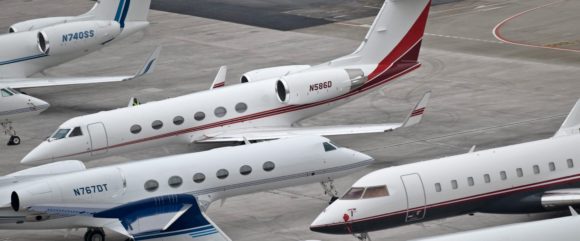Interesting stories (and here) are emerging today about Boeing looking at the 200-300 seat market that does not not require the 787’s range. The market being focused on the US transcon. It was a market once dominated by Boeing 767s and now sees a lot of 757s. The growing popularity of the A321 has to be causing discomfort for Boeing. American is replacing its 767s on the US transcon market with A321s. This is a painful loss of a longstanding customer. jetBlue is also upgrading the A321s and improving its cabin to compete on the US transcon market. The US transcon market is desirable because of the high yields between New York and Los Angeles and San Francisco. Since these flights are over five hours going west, the ability to sell premium is one of the strongest in the US domestic system.

The image is of the quickly forgotten 787-3. Originally planned for the Japanese domestic market, it was dropped as the Japanese carriers opted for the longer range -8. It may appear Boeing was hasty in this decision, but was facing major delays in the program that forced its hand. But here we are, years later, and the 787-3, or a close variant, could be an effective offering for the US transcon market. It has more payload than the A321 and its economics are bound to be significantly better. Indeed its range could easily allow for Hawaii service from the US west coast as well. Commonality with other 787s in service (like at United) ensure the operator gains training benefits and MRO as well.
Boeing appears to now have 787 production in a rhythm. Despite Charleston hiccups, Boeing is churning out the 787s. It could add this model to the offering mix and curtail A321 popularity and provide a real 757 replacement in one stroke. It may have been unpopular a few years ago, but we think the -3’s time may be back.
Views: 0



I think bringing back the 787-3 is rational – and certainly lower cost and risk than an all-new aircraft. Long, thin routes can be excellent performers.
This aircraft may be able to use a GTF engine (if it can be upsized in time), providing even better economics.
GTF engines would result is a loss of commonality that would be a selling point. you lost me on the GTF idea. 787-3 would be a good solution to the china market for capacity and trained pilot and maintenance shortages.
I think we will rather see a new Boeing single isle plane with aluminum fuselage and pretty large and thin carbon wings. Quite the size of the 757 but also replacing the 737, and, a little later, something similar from Airbus. Of course featuring the latest engines, but especially the carbon wings offer great aerodynamic improvements, while the alumimum body keeps the production cost down. Both the C-series and the 777X will serve as a role model here.
I don’t think the 787-3 will come. It has a difficult stand against the low-gross-weight A330, as it is more expensive and has less capacity. Its lower fuel burn does not pay off on shoter routes, plus the A330 will probably get new engines soon. Probably downgraded Trent XWB. Expensive full-carbon-birds only really make sense on long haul.
First, the issue at Charleston has gotten worse with the dumping of the contract workers who were the glue holding the operation together. Boeing management continue to be dollar wise and penny foolish.
A GTF for a 787 is silly at best.
You don’t bring out a new model for a few losses, there has to be a substantial market for the product. The 757 market is mostly gone (taken over by the improved A320 and 737). Is there a wider market?
The new Single Aisle replacement will further erode what remnant is left of the 757 market.
A 787-3 variant is a possibility in the longer term future, but we are talking about 2020+. It would need a different wing and lightened up structure.
Iceland air and many other airlines have their 75’s as their flagship aircraft. And they have asked boeing ever since they closed production of the 75 for a replacement. Since boeing has made a replacement for the 76 wouldnt it be wise for boeing to make a replacement to the very aged 757’s
Buy developing an all new aircraft takes years of time. Those years would give Airbus more time to sell planes and jump ahead in the range and size range that the 787-3 would fill. Also a new 787 variant could use existing production lines for some parts used on other dreamliners while a new plane would likely require new wing and fuselage plants that would drive costs up. While Carbon fiber isn’t as money saving on short routes, it still saves money that adds up over time. Boeing is investing in carbon fiber technology so it is likely they would use it on a new aircraft if they can keep production costs low enough to benefit customers over the life of the aircraft and make airlines interest in the plane grow.
The Japanese carriers had ordered longer range 787-8s at same time as short range 787-3. So it wasn’t a need for longer range as they now use 787-9 in high capacity (395) local flights. Boeing ran out of time and money because of their other issues for this plane, so walked away from it